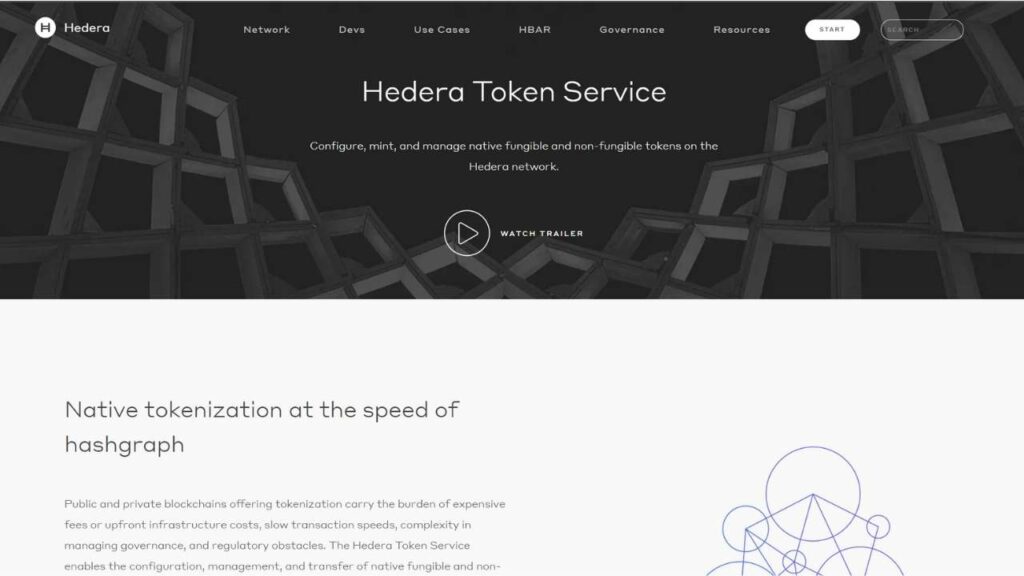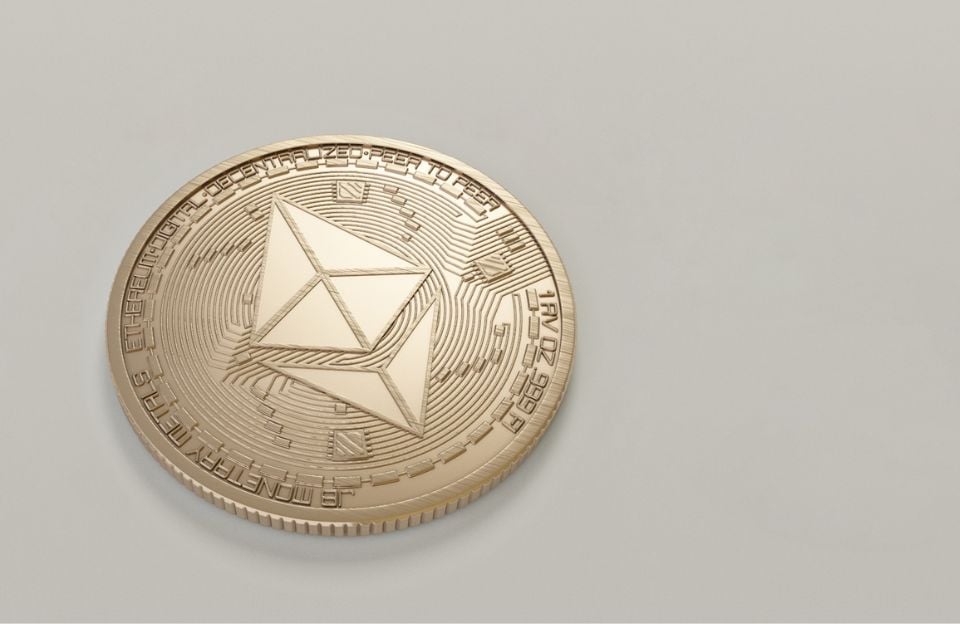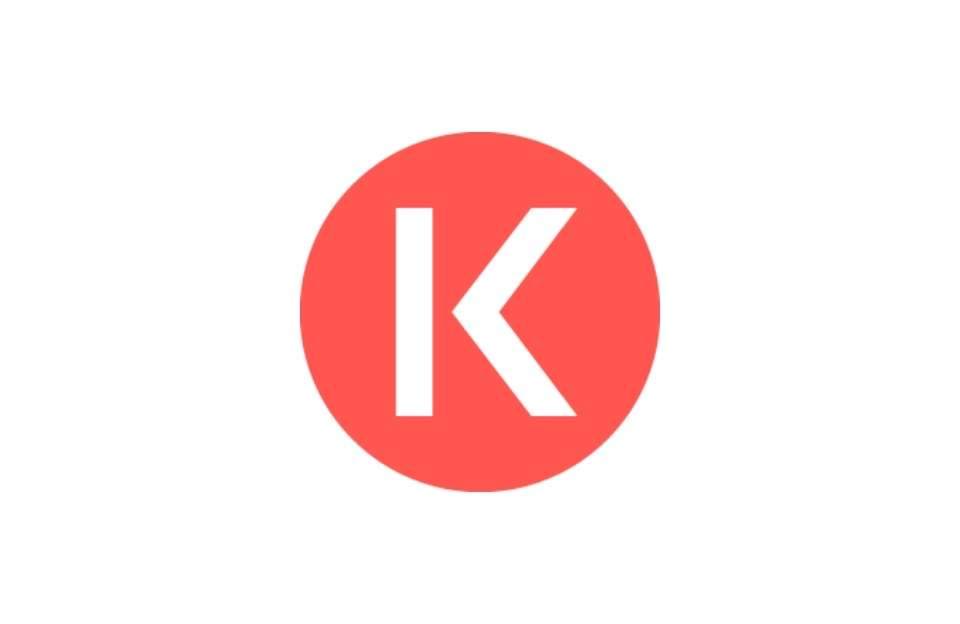What is Hedera (HBAR)?
Luis Clark
- Home
- /
- Cryptocurrencies
- /
- What is Hedera (HBAR)?
Luis Clark
What is Hedera (HBAR)?
Hedera is a proof of stake, open-source public network that governs the building and deployment of decentralized apps. Hedera offers 3 main network services: token services, solidarity-based smart contracts, and consensus services. Hedera is popular for various advantages such as energy efficiency (carbon negative), speed, and heightened network security which are primarily due to its underlying hashgraph consensus algorithm.
HBAR is the native cryptocurrency of the Hedera hashgraph network. It is used to secure the network from breaches via Proof of Stake and to pay application transaction fees. Developers also use the Hedera native token to pay for network services like mining NFTs, logging data, calling smart contracts, and transferring HBARs. In general, the token powers the Hedera hashgraph network.

Who is the Founder?
How does Hedera (HBAR) Work?
The Hedera public network is Proof of Stake and was developed on the open-source hashgraph distributed consensus algorithm. This algorithm offers streamlined efficiency in bandwidth usage and is capable of processing over 100,000 transactions per second in one shard (fully connected peer-to-peer mesh of network nodes).
So unlike the conventional Proof of Work blockchain that chooses a particular miner to pick the next block, a community of nodes running hashgraph agrees on what transactions to include in the ledger collectively. So via virtual voting and gossip about gossip, the Hedera hashgraph chain reaches a consensus on both the consensus timestamp and validity of all transactions. If the transaction is within a set time and is valid then the ledger’s state would be updated to add the transaction with full certainty – finality.
For blockchains, consensus rules demand that blocks settle in a chain that is the longest as agreed by the community. But if 2 blocks are created simultaneously the network nodes will pick one chain to continue while letting go of the other one. This is to prevent the blockchain from forking into 2 differing chains. However, with the Hedera hashgraph all containers of transactions are included in the ledger – none is eliminated. This boosts its efficiency as all transaction branches continue to exist forever and are tied together into one whole chain.
Also, blockchain fails when new containers arrive faster than expected because new chains sprout quicker than they can be pruned. This is why blockchain requires Proof of Work or other mechanisms to artificially reduce growth. However, with Hedera hashgraph nothing is eliminated.
Hedera’s hashgraph consensus algorithm is also validated as asynchronous Byzantine Fault Tolerant (ABFT) using the Coq system and a computer math proof check.
This means that Hedera hashgraph offers mathematically, the highest possible security for distributed systems.
Key Features of Hedera (HBAR)
Hedera Token Service (HTS)

Hedera Token Service enables users to configure, mint, and manage native non-fungible and fungible tokens on the public Hedera network without setting up or deploying a smart contract transaction.
Tokens deployed using the Hedera Token Service offer native programmabilities like scheduled transactions and Atomic swaps for on-chain functionality at the speed of hashgraph.
HTS offers a high throughput and low fees. The fees are also predictable. Transfer of any sum of tokenized assets costs less than 1 cent.
All tokens issued with the Hedera Token Service on the network have the same security, efficiency, and performance as HBAR.
HTS allows users to take advantage of the disruption of public Distributed Ledger Technologies (DLTs) for payments in a secure, and compliant manner. This enables the users to make payments with their stablecoins and cryptocurrencies securely and cost-effectively.
With HTS, developers can manage tokens with high predictable costs and scalable performance. It eliminates the burden of expensive fees, slow transaction speed, and complexity in managing governance that both public and private blockchains that offer tokenization face. With HTS, the issuance of native, multi-signature tokens with scalable performance is easy.
Exchanges like CoinZoom, Huobi, Upbit, OKEx, Bittrex Global, XanPool, and Liquid have already integrated HTS into their structure.
Hedera Consensus Service (HCS)
Hedera Consensus Service (HCS) is a tool for creating decentralized, auditable logs of timestamped and immutable events for web2 and web3 applications. Applications can use HCS to count votes in a DAO, log assets transfers between different blockchain networks, track provenance across supply chains and monitor IoT devices.
Developers can build applications on HCS using any development language of their choice. They can also create a topic, set up their environment, and send their first message. One HCS message costs USD 0.0001. The fee applies to messages used as a standalone or in conjunction with a permissioned blockchain.
With HCS, developers can provide additional privacy by encrypting the content of sensitive messages.
Below are the steps for Hedera Consensus Service
- Create a Topic: Creating a topic will help you manage the stream of messages for one application. This can be a market where people bid on products
- Send: When a bid or any other event happens, it is sent as an encrypted message to the topic.
- Process: All messages sent to the topic are put into consensus order by the Hedera mainnet. After this is done, the messages for a particular topic are then sent by a mirrornet to the application for processing.
- Audit: Previous messages can be easily checked if there is a need to conduct an audit. A state proof also ensures that nothing has been falsified.
Hedera Smart Contract Service (HSCS)

Hedera Smart Contract service enables users to build decentralized protocols and applications that scale with Solidarity smart contracts on Hedera hashgraph network.
HSCS compatibility with EVM enables it to run Solidarity unchanged in the Hedera hashgraph network. Users can also easily port from existing Solidarity codes in minutes or build new ones.
The smart contracts on Hedera are optimized for hashgraph. This enables the contracts to run fast with finality in seconds with predictable gas fees and carbon-negative energy. Smart contracts on Hedera do not just run at a lower cost, they are also less volatile than blockchain alternatives.
Hedera Hashgraph
Hedera Hashgraph is a distributed ledger technology that is patented. The only authorized ledger is Hedera Hashgraph. Hedera Hashgraph is based on the Directed Acyclic Graph (DAG).
With DAG, Hedera Hashgraph can achieve over one hundred thousand transactions in a second. Currently, Hedera’s average transaction time is five seconds. A total of 6.5 million transactions are performed daily on Hedera hashgraph. This is more than the total number of transactions performed by both Bitcoin and Ethereum.
Hashgraph is an alternative to blockchains but it is not entirely a blockchain. Just like the name implies, it is like a graph in that the speed of verifying transactions increases as more transactions are added to the network. Hashgraph stores data in individual hashes instead of blocks.
Hashgraph does not use miners or staking to reach a consensus, consensus is reached through virtual voting and the gossip protocol. Transactions are also verified using the gossip protocol. This allows for faster verification of transactions on the network.
With Hedera Hashgraph, users can reply decentralized applications through smart contracts that use HBAR tokens.
Hedera is governed by thirty-nine enterprises and organizations, this includes multinationals like Boeing and IBM. These governors run the nodes. The possibility of any of the governors layering the nodes is very unlikely because of the legal implications of such actions.
In its special system, only authorized groups can join and operate nodes. The purpose is to stop important data from getting mixed up.
Hashgraph creates events in two different hashes: a timestamp of when the event happened and the number of transactions in that event. Other participants in the adjacent node are aware of the transaction information stored in the event.
When an event is created, the data is sent by the participant to two nodes, these two nodes send the data to two other nodes. Communication between nodes is enabled by the gossip protocol. The transfer of data between different nodes creates a high influx of information in the network, which leads to a gossip sync.
Each node shares all the data it has from the gossip sync to all other nodes in the network in the form of a timestamp. The nodes then compare the type of data they received from each node to confirm that the information is accurate and the absolute truth. This is often referred to as the Gossip by Gossip protocol.
Even though none of the nodes on the network validate an event, each node still has an idea of how each node behaves and can validate the consensus without actively voting. The absence of computation and voting on the network decreases the time for each transaction and increases the number of transactions on the network.
Weaknesses of Hedera (HBAR)
A major disadvantage of Hedera is that since the centralized node structure is controlled by multinational companies, decentralization is not possible. Also, developers can not fork the protocol and create better public uses.
How is Hedera (HBAR) Created?
HBAR has a fixed supply of 50 billion coins of which over 24,345,950,931 are currently in circulation. All 50 billion Hedera coins have been minted before the launch of mainnet in 2018. The Hedera governing council has put in place a 15-year release schedule for the remaining coins. Hedera does not also require the execution of difficult cryptographic algorithms.
The agreement about the Hedera network comes from special strong nodes that talk to each other using the gossip protocol. So all Hedera mainnet nodes contribute to consensus and hold a copy of the public ledger’s state. The mainnet nodes submit transactions to the network on behalf of apps and carry out network service operations. Each node receives compensation in HBAR for the network services rendered.
Mining Hedera (HBAR)
Hedera is a proof-of-stake platform. This means that it does not need mining to solve complex computational problems and offer proof of work as a reward. Rather, Hedera’s build utilizes the value of the scarce pre-minted resource (HBAR) which is staked to Hedera network nodes to protect the network against several forms of cyber attack and achieve consensus.
So all Hedera coins have been minted before its launch so you cannot mine the token. That said, because Hedera is PoS there’s an option to earn coins as a reward as you would when mining.
Here’s how that works. Nodes on Hedera have a weighted influence on consensus, which is directly proportional to the amount of HBARs staked to each node.
Every transaction is put in consensus once it is validated by nodes which represent an aggregate stake of more than two-thirds of the total supply of the network’s HBARs. For this, rewards are earned and divided between the accounts that stake to a node and the node operator. This earns the staker a share of the fees.
Which Blockchain does Hedera (HBAR) Use?
Hedera is currently the only public ledger that uses the Hashgraph Consensus, not the traditional blockchain. This consensus focuses on tight network security and quicker transaction times than the alternative blockchain consensus mechanism.
How to Use Hedera (HBAR)?
HBAR is the native cryptocurrency of the Hedera network which is used to pay application fees on the network. The HBAR token can be used to pay for network services like minting both fungible and non-fungible tokens (NFTs), transferring HBAR tokens, logging data, and calling smart contracts. HBAR token is also used to pay fees that compensate validator nodes for bandwidth and storage.
Staking of HBAR tokens to network nodes protects the network from attack. HBAR tokens influence consensus for validating transactions. Hedera operates a weighted voting system which makes it difficult for one actor to maliciously affect consensus. For this to happen, a centralized authority will need to own and stake about one-third of Hedera’s HBAR token total supply.
How to Buy Hedera (HBAR)?

You can easily buy HBAR tokens on top exchanges like Uphold, Binance, Kucoin, Huobi Global, and Bitstamp. CoinMarketCap has a list of all the exchanges that support the trading of HBAR token.
To buy HBAR cryptocurrency, you will need to create an account on any of the exchanges that support the trading of Hedera. After creating and verifying your account with the exchange, you can then fund your account. Funding your exchange account can be done using a debit or credit card or via bank transfer.
Once your account is funded, you can buy HBAR directly from the exchange or another user via peer-to-peer trading.
You can also buy HBAR using another cryptocurrency. In this case, you will use a trading pair like BTC/HBAR or USD/HBAR.
How to Store Hedera (HBAR)?
Most exchanges that support the trading of HBAR, have wallets where you can store the coins after purchase. If you choose to store your crypto assets on an exchange wallet, ensure you pick an exchange with good security as most exchange wallets are not secure and easily prone to malicious attacks.
You can keep your Hedera tokens safe on the Ledger Hardware wallet. However, it’s important to note that the Trezor hardware wallet does not currently provide support for HBAR.
Other wallets that support the storage of HBAR include:
HashPack Wallet

This is a browser-based, chrome extension wallet. It enables users to connect to Hedera decentralized applications in the NFT and decentralized finance ecosystem. HashPack Wallet supports NFT and Fungible tokens and offers native staking. It is compatible with the Ledger hardware wallet.
Blade wallet
This is also a Chrome extension and browser-based wallet that connects Hedera decentralized applications in the DeFi and NFT ecosystem. It offers native staking and bank card purchases.
Hedera Wallet
This is the official Hedera Hashgraph wallet that gives access to the Hedera mainnet. The wallet is available on both Android and iOS operating systems. Hedera wallet has an intuitive interface that enables users to easily make transactions from the wallet.
Best Place to Stake Hedera (HBAR)
The best place to stake Hedera is on-chain – on the Hedera platform itself.
As already stated, Hedera is a Proof of Stake network. This means that enabling native incentivized staking is crucial for the Hedera network to keep on its path of decentralization. To stake on the network users just need to choose a node that is currently being operated by the Hedera Governing Council and begin staking.
What You Need to Know About the Future of Hedera (HBAR)
Hedera is a public network built to fix the restrictions of traditional blockchains and distributed ledgers. At the moment, there are various dozen protocols and companies that are using Hedera hashgraph that generate more than 1.4 million transactions daily on the Hedera mainnet. This surpasses the Ethereum blockchain. Also, these applications cut across several industries including healthcare, supply chain management, financial institutions, and much more. Plus, Hedera announces new partnerships and projects from time to time as well.
All these things make it a reliable network and give Hedera a promising future concerning industrial partnerships.
Furthermore, Hedera hashgraph is permissioned today with mainnet nodes operated by Hedera Governing Council members. As Hedera grows more and more towards complete decentralization of the network, its mainnet will become permissionless, which means anyone can run nodes.
Conclusion: Should You Put Your Money in Hedera (HBAR)?
There’s no doubt Hedera has a promising future concerning its partnerships and technology. However, for investors, Hedera may not offer a life-changing investment. This is because their tokenomics appears to create an environment where the big investors and partners profit from leveraging Hedera hashgraph but retail investors need to depend on hype alone to push the price up. So while the technology and partnerships are excellent for Hedera’s finding company, small investors may end up not enjoying high profits. Hedera is also lacking a thriving user community, which is essential for the continual growth of the project at the base level.
That said, if the network gains even more popularity and users in the crypto space buy into it, HBAR would offer great investment outcomes.
Risk in Investing in Hedera (HBAR)?
HBAR, like any other cryptocurrency, is a volatile asset. This means that there’s a huge possibility that you can lose your entire investment if the value of the coin drops. So only invest money that you can afford to lose in the worst-case scenario.
FAQ
Most frequent questions and answers
HBAR uses the Hashgraph Consensus technology which is arguably a faster and more secure alternative to the traditional blockchain mechanism.
How is Hedera different from Blockchain?
Copyright
- Blockchain: Open-source
- Hashgraph: Patented
Security
- Blockchain: Cryptographic hashing
- Hedera Hashgraph: ASynchronous Byzantine Fault Tolerance
Applications
- Blockchain: Hyperledger Blockchain Projects, Bitcoin, EOS, Ethereum
- Hedera Hashgraph: Swirlds
Asynchronous Byzantine Fault Tolerance
- Blockchain: Only a couple of implementations in Hyperledger are Byzantine Fault Tolerance compliant.
- Hashgraph: 100% compliant
Consensus
- Blockchain: Byzantine Fault Tolerance, Proof of Work, PoS, and Proof of Elapsed Time
- Hedera Hashgraph: Virtual Voting
Beyond the above, the Hedera Hashgraph algorithm does not require Leader Based Systems or Proof of Work. It can offer high performance and low cost at any point of failure. Plus, Hedera Hashgraph does not require high computation power or electrical consumption.
All blockchain platforms have different speeds concerning their transactions per second. For instance, Ethereum can carry 15 to 20 transactions per second, Bitcoin offers 7 to 10 transactions per second, and the Hyperledger Sawtooth can run thousands of transactions per second. However, the Hedera Hashgraph permits hundreds of thousands of transactions in one second because the data travels exponentially.
Hedera Hashgraph is also more miner friendly as it can pick the order of transactions, and delay or stop them from being added to the block if needed. However, Hedera’s consensus of timestamps prevents individuals from manipulating the order of transactions.
No, the HBAR runs on the Hedera Hashgraph network just as the Ether cryptocurrency runs on the Ethereum blockchain.
A total of 39 partners are currently involved with HBAR, with tech giants like IBM and Google sitting on its council. Boeing is also on the project’s council.
Yes, the smart contracts on Hedera can exchange and hold value in the form of HBAR, ERC tokens, and Hedera Token Service Tokens. This is an important aspect for creating decentralized apps that depend on contracts in aspects like NFT marketplaces, ESG, DAOs, Defi, and much more.
Hashgraph can take over the blockchain as the technology can accommodate hundreds of thousands of transactions in a second and verify more than a million signatures per second. So, yes you can call it the new blockchain that can potentially replace blockchain technology.
Some of the biggest names in the tech industry are Invested in HBAR. This includes LG, Google, IBM, Wipro, Tata communications, Boeing, etc.
At the moment the Hedera Hashgraph can do 10,000 transactions per second but the technology can accommodate over 100,000 transactions per second.
Hedera Hashgraph is a lot faster and more secure than Ethereum and the Bitcoin network. So it is more of a potential replacement for Ethereum.
Developers pay the network transaction fees in HBAR cryptocurrency for every API call.
One single HBAR transfer transaction can have numerous syncing accounts from which the HBARs are moved and multi-receiving accounts.
The Hedera mainnet launched in 2018 and in 2019 it was officially open to everyone
To facilitate network protection, Hedera utilizes HBAR. HBAR is staked to a node to weigh votes on transactions to attain a consensus. Due to the weighted votes, it is hard for bad actors to affect consensus.
These are a set of APIs that enable developers to build decentralized applications.
Hedera uses a consensus algorithm known as hashgraph to track time-stamped transactions between nodes on the network.
Skrumble.com provides all its content for informational purposes only, and this should not be taken as financial advice to buy, trade, or sell any investment instruments or products, including but not limited to cryptocurrencies, or use any specific exchange. Please do not use this website as investment advice, financial advice, or legal advice, and each individual’s needs may vary from that of the author. Investing in financial instruments, including cryptocurrencies, carries a high risk and is not suitable for all investors. It is possible to lose the entire initial investment, so do not invest what you cannot afford to lose. We strongly advise conducting your own research before making any investment decisions. This post includes affiliate links with our partners who may compensate us.
To view our privacy policy read here.






